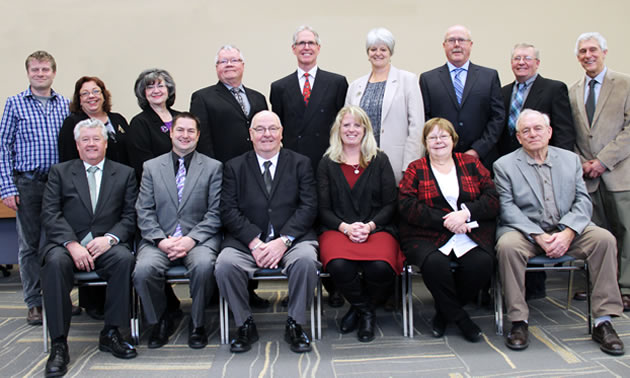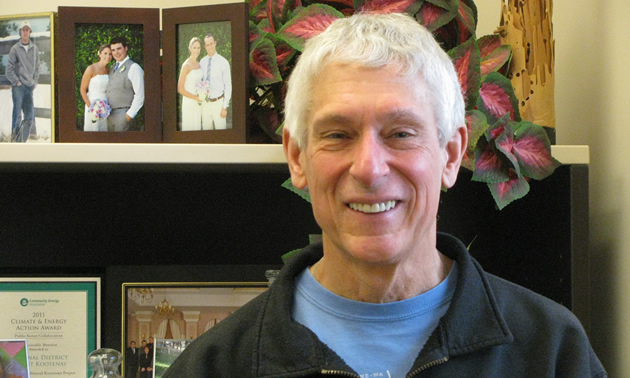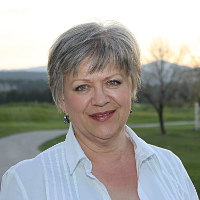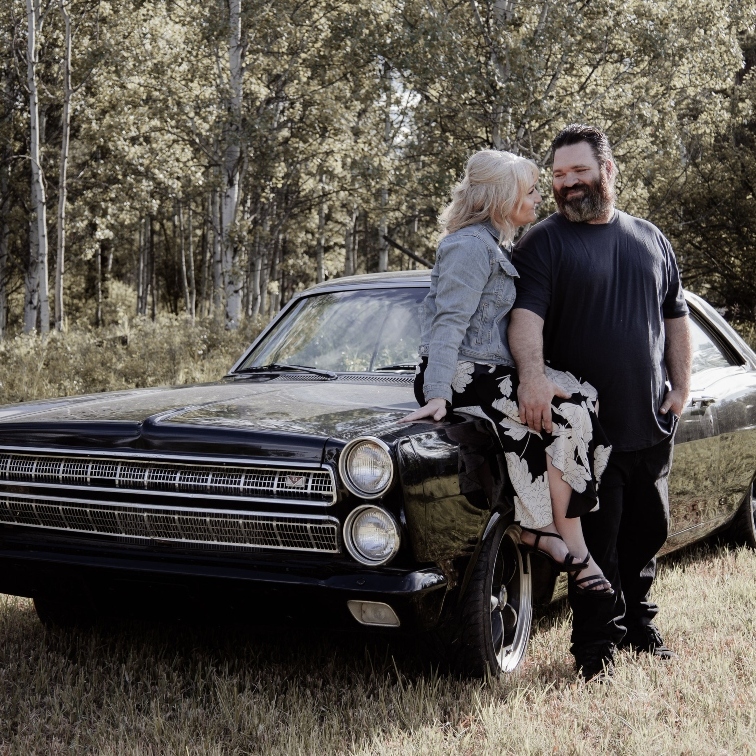RDEK at the half-century mark
From its incorporation in 1965, the Regional District of East Kootenay has evolved to suit the needs of its population

The board of directors of the Regional District of East Kootenay is made up of representatives from nine municipalities and six electoral areas. — Photo courtesy Regional District of East Kootenay
In 1964, B.C.’s Municipal Act was amended to authorize the incorporation of regional districts, and during the next three years, 28 regional districts were created in the province. The Regional District of East Kootenay (RDEK) was incorporated on November 30, 1965—the same year that Canada adopted the maple leaf flag as its national flag.
The purpose of the formation of regional districts was to create a system of providing services for unincorporated areas, working in co-operation with their member municipalities. The boundaries of the RDEK encompass six electoral areas—A, B, C, E, F and G—and nine municipalities: District of Elkford, District of Sparwood, City of Fernie, City of Cranbrook, City of Kimberley, Village of Canal Flats, Village of Radium Hot Springs, District of Invermere and Jumbo Glacier Mountain Resort Municipality. Each area and municipality has one representative on the RDEK board of directors—except Cranbrook, which has two.
Boundaries, services and engagement
An informative brochure called RDEK 101 - A Guide to Regional District Operations in BC and in the East Kootenay, states the following:
Unlike a municipality that has one boundary and one set of taxpayers, Regional Districts have a “boundary” for each service and only the people within that boundary pay for (and receive) that service.
Elected regional district boards address issues, introduce new services and spend money only at the requests of and with the approval of the electorate that will receive the service. That requires ongoing rural resident engagement, which is both a responsibility and an opportunity.
Early success
The RDEK’s first administrator was Frank Bertoia, who served in the position for 10 years. Working within the very loose definition of its responsibilities and privileges in those early days, the administration nonetheless managed to do a noteworthy job. In 1968, Minister of Municipal Affairs Dan Campbell was quoted in The Regional District Concept brochure as follows: “I would say the most successful, effective regional districts are those in the Capital Region (Victoria) and East Kootenay.”
That effectiveness was sometimes hard-won. The rural electorate was often less than enthusiastic about the new layer of bureaucracy, perhaps not appreciating the foresight that is necessary for provision of adequate services for a growing population (30,749 in the census of 1966 and 56,655 in 2011). Those services include garbage disposal, land use planning and zoning, building inspection, fire and rescue and cemeteries—only a sampling of the more than 100 services that have come to constitute the responsibilities of the RDEK.
Education and communication are important elements for the RDEK, and before the era of the photocopier, much less email, these were a big part of the workload of the early RDEK administration. Eventually, rural residents began to understand that the RDEK administration was there to serve the immediate and long-term needs of the residents, but would only take specific action with the permission of the majority.

Rob Gay is the Area C director and chair of the board for the Regional District of East Kootenay. — Marie Milner photo
50 years celebrated
At the RDEK’s 50th anniversary celebration held in December 2015, board of directors chair, Rob Gay, stated the following:
"There are so many things about the RDEK, our Board and our staff that I am proud of, and as I look back on even the past 20 years or so, the diversity of our organization and our ability to change and evolve stands out.
"We have had many successful projects because of the partnerships we have formed and nurtured as we’ve collaborated with other levels of government, First Nations, not-for-profit community champions, neighbouring regional districts, Columbia Basin Trust and private sector businesses.
"It has been an honour to serve on this board for the past 10 years and to be a part of the many successes of the Regional District of East Kootenay. Over the past 50 years, there have been many challenges and there have also been many triumphs.
"We have been recognized for our innovation through services like the Columbia Valley Local Conservation Fund; have received awards for leadership on projects like Carbon Neutral Kootenays and have been recognized federally and provincially as partners for climate protection. We’ve received best practices awards for our website and citizen engagement and we’ve been fortunate to have strong CAOs providing leadership and guidance every step of the way. Our current CAO, Lee-Ann Crane, has been recognized Provincially for her work on the elections manual and has been honoured by the LGMA (Local Government Management Association) for her professional service.
"A great source of pride for me as board chair was seeing the results of the client satisfaction survey in which 90 per cent of respondents reported they received good or excellent service from our staff.
"Each one of you here tonight is in some way part of our story—and our success—over the past half-century. With the dramatic changes in the past 50 years, the one constant has been our commitment to providing service to our residents, and we’ve been able to achieve that because of the collective efforts of our board and staff, our partners and other levels of government."






Comments